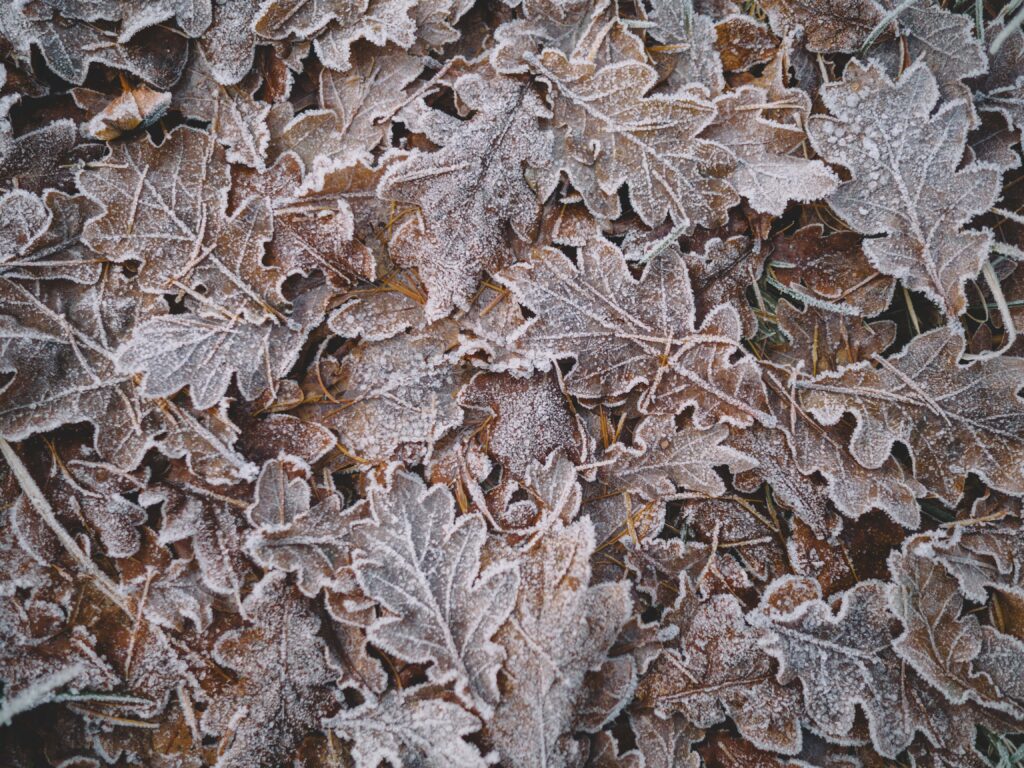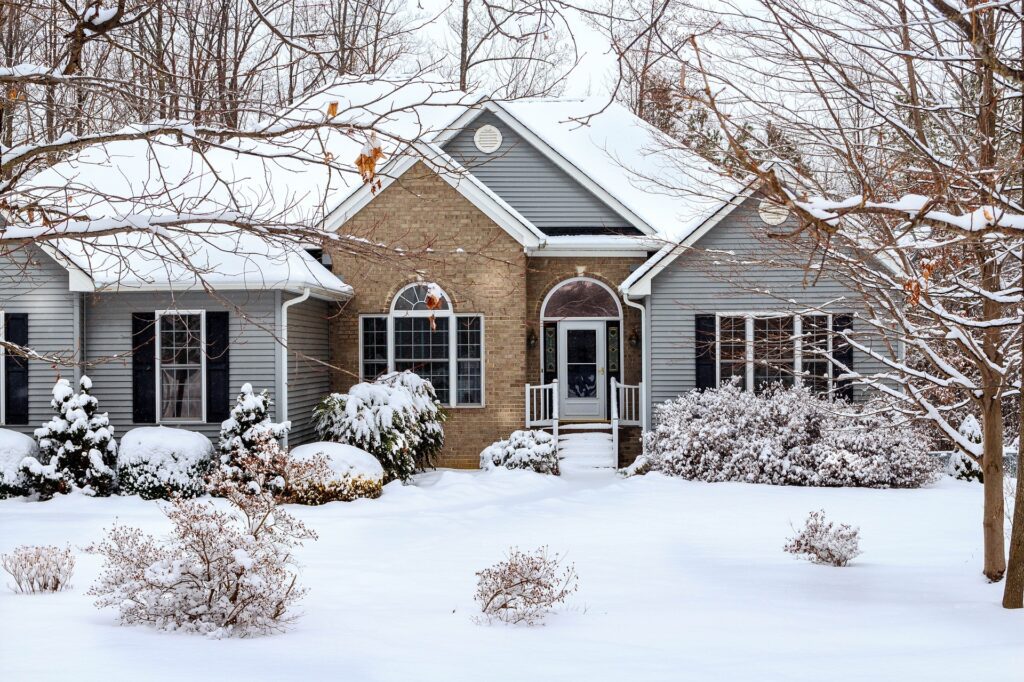Winter is the time of year that can be detrimental to your yard and landscaping. Cool temperatures and freezing rain can make it hard for certain plants to survive throughout the season. To help preserve your landscaping investment, it’s important to take certain precautions to keep your plants in tip-top shape! Today, P.O.P.S. Landscaping will discuss winter landscaping tips for the new year that will help your plants and yard survive this chilly New Year season.


Utilize Mulch In Your Winter Landscaping
Mulch is a great defender against winter weather. It prevents the repeated freezing and thawing of soil that helps plants to produce. Start by applying three to four inches of mulch after the ground begins to freeze. Avoid laying mulch too close to the trunks or stems of plants. Mulching is an important control for erosion and loss of water as well. A layer of mulch will reduce water loss and help maintain uniform soil temperature around the roots. You can always add seed to patchy spots on the lawn. It won’t always fill in for winter, but at least by early spring, it will look greener. Fertilization before the first expected frosts helps promote healthy growth and strong roots before the harsh weather hits.
Remove Those Non-Winter Plants
Winter weather is not so nice for all plants. Some plants can withstand the temperatures and some will die off from the harsh conditions. If you have certain plants you want to use the following season, it’s recommended to dig them up. By digging them up, you can store them in a winterized shed or indoors to live throughout the winter. A few examples of plants that don’t fend well during winter are dahlias, cannas, elephant ears and more. Picking plants that don’t lose their leaves or needles when the temperatures drop is a great way to add color to your winter landscape. Note that your garden doesn’t just have to be awash with green; there are plenty of winter plants with lots of color to add.
Here are some great winter plants that add a splash of color to your lawn:
- Pansies are typically low-growing plants ranging from six to ten inches tall. These five-petaled flowers are top sellers every year. Pansies bloom all year long and come in a huge variety of colors. The large-flowered, faced varieties can stand out and are always an eye-catcher for most. Pansies are typically planted in late winter so that they are ready for early-spring flowering. Check your local nurseries for winter landscape availability.
- Violas are tolerant of cold, winter weather, maybe even more so than pansies. They thrive well in landscape beds as well as planters. They grow right through Thanksgiving and will still be shining in the garden at Easter. Violas are another great plant to add to your landscape. They come in all of the colors that the Pansy does, but there are also variations such as yellow with a violet wing. Violas have a small bloom but are still very visible. They will bloom all winter season and are readily available in Atlanta.
- Kale and Cabbage add color when added to your garden. These plants are vibrant and come in an array of colors. You will find them in shades of purple, pink, red or white. They can tolerate the cold and can survive winter temperatures as low as five degrees. Ornamental cabbage and kale are used as seasonal color accents within the pansy and viola beds. They are a great way to add color to your winter landscape. They also get more compact as the weather gets colder. Cabbage tends to look heavier and more flowery and kale has a more ruffled look to the foliage.
- Daffodil bulbs will grow and flower between February and late March, depending on the winter weather. They provide lovely color for early spring and will bloom every year. A bulb looks like a giant seed. They are planted six to eight inches deep in a group throughout the back quarter of the flower bed. Daffodils are a common bulb used in Atlanta. Ranging from yellow, orange, and white, Daffodils have a three-week blooming period and are the perfect way to add some color. Additionally, when they are planted in large swaths, they appear to have a much longer lifespan since some start later or earlier than others in the flower beds.
- Tulips are by far the most popular flower in many southern states. They provide a gorgeous bloom and lots of color. In most cases, they tower above the rest of the flowers for a gorgeous visual. Tulips come in almost all colors and they start in a teardrop bloom that falls open as they mature. Gardeners normally plant tulips in the fall, when the soil is cool but not frozen, so the bulbs can begin growing roots before going into their winter dormancy. Check out your local nurseries for tulip bulbs to plant.


Don’t Forget To Water Everything
In the winter months, certain landscaping can really suffer. If they’re not adequately watered, the stored nutrients within the plants may be depleted. This makes them more susceptible to winter burn and death once the ground freezes and their roots can no longer soak up water. Before the ground freezes, it’s important to make sure all your plants are getting adequate amounts of water. This can help with life expectancy and keep your landscaping alive all year long. Water is life. Also, if it snows, don’t clear the snow from your lawn—it provides a protective layer. However, try to avoid piling shoveled snow on your grass to minimize stress and fungal disease risk.
Protect Your New Landscaping Projects
Did you recently plant a new tree or shrub in your yard? Brand-new plants are like newborns and need as much attention as possible. Thin-barked trees like linden and maple are more susceptible to frost cracking and sun-scald. If left unprotected, these new plants have a higher risk of dying during the winter. Additionally, wildlife has been known to feed off bark and roots as a source of food. To avoid this from happening, wrap up your investments during the cold winter. Use a corrugated tube or wrap the tree from the bottom up with a thick tree wrap or burlap. This acts as a barrier to the harsh conditions.
Avoid Salt Usage
Salt-based de-icers are a quick way to kill your grass and landscaping plants. Salt drains moisture from the plant cells and causes the tissues to dry out. A different and effective alternative is sand. If you are not a fan of sand, consider a de-icer that’s either calcium or potassium-based, and use it sparingly. Get rid of extra salt by flushing out the soil with plenty of water. If your soil is dense and compact, lawn aerating encourages better circulation of oxygen and nutrients to help the grass stay healthy.
Keep Your Yard Clean
It is important to consistently remove leaves and debris from your property throughout the winter season. If landscaping debris is left on your property, the grass under them will not be able to receive the proper sunlight it needs to remain healthy. Simple rake your yard or use a leaf blower if you have one. Clearing the lawn stops the leaves from falling and turning brown, ruining the beautiful grass underneath. So, keep it clean! This is a simple and easy way to keep your yard alive and healthy throughout the winter.
New Year, New Pruning
Most plants go dormant during the winter. This is the time of year when they’ve halted active growth and have hunkered down for the cold weather. Because of this dormancy, late winter and early spring are typically the best times to prune trees and shrubs. Remember to remove dead annuals! While you don’t want to eliminate winter-blooming flowers, remove annuals that are withering as fall ends. You want to prune hard at the end of winter or very early spring before any new growth starts. This allows the plant to put its energy towards producing new, healthy growth when the warmer temperatures of spring roll around.


Call Us Today!
P.O.P.S. Landscaping offers a full range of landscape maintenance services, tailored to meet your residential or commercial needs. The more homes in one neighborhood we service, the more competitively priced we can be on each property! P.O.P.S. Landscaping also offers a full-service lawn maintenance program on an annual contract, weekly or biweekly service agreement. This program is a ‘highly manicured’ type that is all-inclusive. Our fee ranges from $250 to $750 per month for most residential or commercial properties. Ask about our referral programs.
Give us a call today & Happy New Year!


